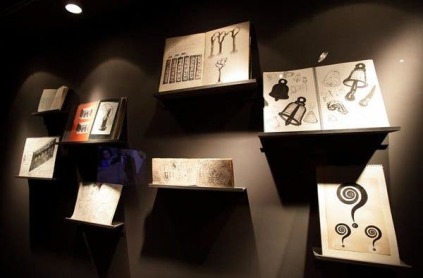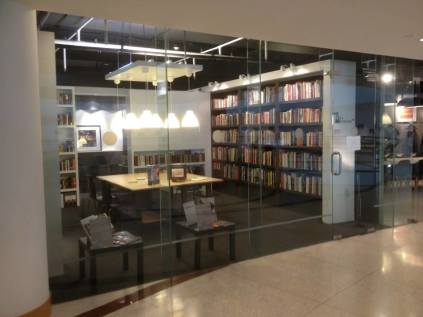
![]()
January 2022
TAA IS IN TRANSITION!
UPDATE
JANUARY 2022
HAPPY NEW YEAR
from THAI ART ARCHIVES!
DUE TO THE ONGOING PANDEMIC, AS WELL AS CURRENT CHALLENGES IN FUNDING A PUBLIC-ACCESSIBLE HUB, TAA IS CURRENTLY TRANSITIONING TO AN ENTIRELY DIGITAL PLATFORM.
WE APPRECIATE EVERYONE'S SUPPORT TO DATE, AND WE ALWAYS WELCOME FEEDBACK AND QUERIES ABOUT OUR FUTURE PROGRAMMES. YOU CAN REACH US READILY AT THAIARTARCHIVES@GMAIL.COM.
PLEASE CHECK BACK REGULARLY WITH THIS OFFICIAL WEBSITE FOR FUTURE UPDATES. YOU MAY ALSO VISIT OUR FACEBOOK AND INSTAGRAM PAGES UNDER "THAI ART ARCHIVES," WHERE WE FREQUENTLY POST UPDATES AND RELATED TOPICAL MESSAGES.
In anticipation of taking up new initiatives in research; collections development & digitization; educational programs; and exhibitions, TAA and creative partner WORKS-V have closed their special projects hub at the Bangkok Art and Culture Centre in order to focus on a new, web-based platform for global access.
It’s been a great run at the Bangkok Art and Culture Centre (BACC), and our warmest thanks go to former BACC director—and current TAA advisory board member—Chatvichai Promadhattavedi, for enthusiastically believing in our mission and welcoming us on board from 2012 to 2016. We also gratefully thank all past and current members of TAA's GLOBAL FRIENDS CIRCLE for helping to make that museum residency possible.
As we approach our 12th Anniversary, it’s time to stretch! While we develop a new web-based space for the digitization of our various initiatives, THAI ART ARCHIVES remains a global resource and collaborative entity regionally for partnering with friends and colleagues on special projects, exhibitions, research, and related initiatives.
Please be in touch with any suggestions and potential projects; your support and championing of our efforts have been greatly appreciated, and they remain critically important to TAA's future success.
Thank you for your support!
[Photo: Thai Art Archives hub @ Bangkok Art and Culture Centre, 2012-2016; photo by Thai Art Archives; All rights reserved.]
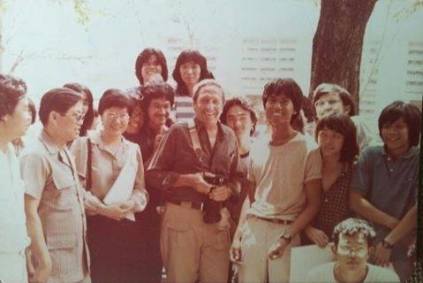
TAA'S SPECIAL RESEARCH PROJECT 2018
ROBERT RAUSCHENBERG & THE RISE OF A "THAI CONTEMPORARY" takes a look at a little-known expedition that Robert Rauschenberg made to Thailand with a single studio assistant in early 1983, when he traveled the country and carried out a special series of transfer drawings, still photography, and film recordings documenting his experiences and creative interactions with members of the Thai contemporary art world.
This project takes Rauschenberg's entry into the Thai context as a starting point for exploring the many ways his example helped to transform the nation's art history from an anachronistic modernism to a fully "contemporary," avant-garde condition. This is no "influence" study; neither is it a tracing of stylistic "constants" between Rauschenberg's "Pop" sensibility and his Thai audience. Rather, by recovering lost documentation in Bangkok and New York (with the generous assistance of the Robert Rauschenberg Foundation), and retracing Rauschenberg's peregrinations, this research project suggests that the Thai condition was a complex and self-directed phenomenon, out of which Thai contemporary artists not only respected their forebears but ultimately rejected any simplistic practice of appropriation, assimilation, or other form of "copying" to forge their unique, progressive "contemporary."
As THAI ART ARCHIVES looks forward to wrapping up its research in Bangkok this autumn (2017), we are seeking sponsors for the last leg of research in Thailand before we return to New York for our final collation of research for an accompanying exhibition and publication in the United States and Asia. Please consider contributing to our funding if you are able to help ensure our success in realizing this historic achievement in early 2018! If you can assist, please write us at thaiartarchives@gmail.com.
If you are interested in assisting with research, please be in touch; we still need assistance with many aspects of this project in Bangkok and Chiang Mai, so we'd love to hear from you.
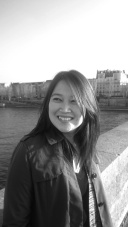
ARCHIVE FOCUS (2010-2016): TAA Global Research Associates
TAA Global Research Associates assist the director and special projects partners with historical/contemporary research; strategic development; bi-lingual (English-Thai) translation, transcription, and interpretation; administration of special projects; regional/global education; and public outreach. Research Associates based in Bangkok regularly participate in scholarly research, institutional development, and administration of special projects at the TAA “hub” at the Bangkok Art and Culture Centre. We’re delighted to have these distinguished graduate students and professionals with us, and we’re grateful for their generous participation while they pursue their own demanding studies and independent projects. [If you are interested in joining the TAA as a Global Research Associate, please contact the director at thaiartarchives@gmail.com.]
Current Research Associates in Asia, Europe, and the United States
POJAI AKRATANAKUL, MA, Visual Arts Administration (Curatorial Concentration), New York University; Exhibitions Intern, Independent Curators International (ICI); Gallery Intern, Tyler Rollins Fine Art; Assistant Curator/Project Coordinator, Bangkok University Gallery (BUG); Contract Exhibition Officer, Bangkok Art and Culture Centre (BACC); BFA, Visual Arts (First Class Honors), Chulalongkorn University.
PAISID ARAMPHONGPHAN, PhD, History of Art and Architecture (Specialization in Postwar Performance Art), Harvard University, 2015; Helena Rubinstein Fellow in Critical Studies, Whitney Museum of American Art Independent Study Program (2011-2012); MA, History of Art (Distinction), Courtauld Institute of Art, University of London (2008); BA, History of Art/Literary Arts (Magna Cum Laude), Brown University (2011)
ARIYA (PO) BUNYAPAMAI, Bachelor of Industrial Design, Pratt Institute, New York; Exchange Program Participant, Glass Design, Linneaus University, Nybro, Sweden
NAPAT (MAI) CHARITBUTRA, MA, Art History, Department of Art and Archeology, Silpakorn University, Bangkok; Curatorial Research Assistant, ROBERT RAUSCHENBERG IN THAILAND 1964/1982 PROJECT, Thai Art Archives, Bangkok (2014).
THANAVI (PONG) CHOTPRADIT, MPhil/PhD, History of Art and Screen Media, Birkbeck, University of London; MPhil, Western and Asian Art History in Comparative Perspective, Leiden University; BA, Art History, Silpakorn University
PAT KOLYOUTHAPONG, Ph.D. Candidate, University of California, Santa Cruz: Visual Studies; Curatorial Assistant, MoMA PS1 [The Museum of Modern Art, New York], Department of Performance and Media Arts: Live Programming; M.A., Art History, University of California, Berkeley; Special Events Intern and Volunteer Coordinator, FOWLER MUSEUM; Volunteer in Visitors’ Services, BOWER MUSEUM; special interests in Thai modern and contemporary art and SouthEast Asian studies
WILLIAM M. OWENS, Director, PacificLotus Communications, New York/Honolulu; MS Candidate, Library and Information Sciences, Pratt Institute, New York; MA, Asian Studies, University of Hawai'i at Manoa; BA, Liberal Studies (cum laude), Georgetown University, Washington, D.C.
THITIPOL (ARM) PANYALIMPANUN, MSc, Publishing, New York University; Contributing Writer, Asian Correspondent; Communications Intern, Human Rights Watch; Staff Writer, BK Magazine; BA Communications Management, Chulalongkorn University
CHAYAWAT (EAK) PANYAPHET, MFA, Art Theory, Silpakorn University, Bangkok; BFA Printmaking, Chiangmai University; Exchange Student, Royal University College of Fine Arts (KKH), Stockholm, Sweden [2007]
MARISA PHANDHARAKRAJADEJ [pictured above], Ph.D. Candidate, Sociology of Art & Culture, Université Paris 3 – Sorbonne Nouvelle, Paris; M.A., Art & Cultural Policies, Université Paris 8 – Saint Denis; Pre-Masters in Cultural Studies, Université Paris 1 Panthéon Sorbonne; Founding Member, Collectif du dimanche, Paris [consortium of five independent curators]; Intern (full-time), Musée d’Art Moderne de la Ville de Paris (2008–2009).
CHANON (KENJI) PRAEPIPATMONKOL, MA, Art History, University of Michigan; BA, Comparative Literature and Art History, Dartmouth College, Hanover, USA; Curatorial Intern, Hood Museum of Art, Dartmouth College
VIPASH PURICHANONT, PhD, Curatorial/Knowledge, Goldsmiths, University of London; MA, Arts Administration and Policy/Modern Art History, Theory, and Criticism, Graduate School of the Art Institute of Chicago; BA in Art History (1st Class Honors), minor in Archaeology, Faculty of Archaeology, Silpakorn University, Bangkok
PITCHAPA (CHERI) SUPAVATANAKUL, MSt, History of Art and Visual Culture, University of Oxford; BA, International Liberal Studies, Waseda University, Tokyo; Research Assistant, Department of Visual Arts, Chulalongkorn University, Bangkok
NAWEEYA (EVE) TANGSAKUL, MA, Arts and Cultural Management, International University of Catalunya, Barcelona; BA, History of Art, Faculty of Archaeology, Silpakorn University; Gallery Assistant, Gallery VER
CLARE VEAL, PhD, Asian Art History, The University of Sydney, 2015; Double Bachelor of Art History and Arts [History], University of NSW, College of Fine Arts, 2009; Thai Art Archives Scholar-in-Residence, 2012–2013.
WORRAWID (LEK) WARASIN, Guest Instructor of Thai Classical Music & Theory, Kanda University of International Studies, Chiba, Japan, 2012-2013; MA, Culture Studies and Ethnomusicology, Research Institute of Languages and Cultures of Asia, Mahidol University, Bangkok; B.Ed., Fine Arts Department, Bunditpatanasilpa Institute, Bangkok.
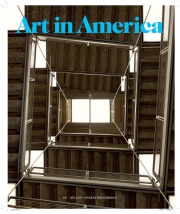
May 2015
THAI ART ARCHIVES BRINGS CONTEMPORARY THAI ART TO GLOBAL AUDIENCES
TAA DIRECTOR GREGORY GALLIGAN NAMED "ATLAS CORRESPONDENT" 2014-2015
BY ART IN AMERICA MAGAZINE
TAA is delighted to announce that director/co-founder Gregory Galligan has been chosen by ART IN AMERICA magazine to be one of three global ATLAS CORRESPONDENTS for 2014-2015.
Along with correspondents reporting from Chicago and Cairo, Galligan has written three articles on the Thai art scene from Bangkok for three issues of the magazine throughout 2014-2015.
The first in the series appeared in the November 2014 issue, along with Galligan's extensive feature article on Thai artist Jakkai Siributr, occasioned by Siributr's strong critical reception at Art Basel Hong Kong 44 (2014) with his work 78 (commissioned for Art Basel by Yavuz Fine Art). The second in the series appeared in the February 2015 issue, and the 3rd has just been published in the May 2015 issue.
[Photo: Cover, Art in America, May 2015; inside, Gregory Galligan's ATLAS BANGKOK piece, "Who's/Whose 'Thai Contemporary?'", examining the contentious nature of the current Thai contemporary art world and the Thai pavilion of the Venice Biennale; Photo by generous consent of Art in America magazine; All rights reserved.]
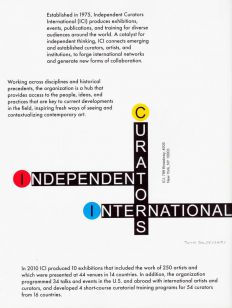
Updated May 2014
THAI ART ARCHIVES & INDEPENDENT CURATORS INTERNATIONAL (ICI) OFFICIAL PARTNERS
THAI ART ARCHIVES (TAA) and INDEPENDENT CURATORS INTERNATIONAL (ICI) are delighted to announce a working collaboration to bring to New York and Bangkok a host of special projects and cooperative events. This program was inaugurated with TAA Director Gregory Galligan's curatorial talk at ICI in February 2013; in 2015, TAA aaand ICI will team up to bring a second venue of Hans Ulrich Obrist's do it exhibition to Bangkok. We welcome all feedback from our friends and followers everywhere. Stay tuned for further announcements!
Independent Curators International (ICI)
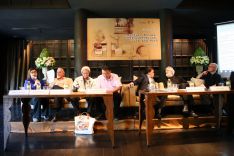
14 July 2013
Esteemed Thai Scholar Chetana Nagavajara Writes on the Importance of Archival Studies in Thailand on the Occasion of [Montien Boonma]: Unbuilt/Rare Works
RANDOM THOUGHTS ON MONTIEN BOONMA AND THE ARCHIVAL APPROACH TO HIS LIFE AND WORK
July 12, 2013 at 3:08pm
by Chetana Nagavajara
Silpakorn has its detractors. Their usual diatribe goes like this: “Silpakorn has not created a respectable school of art, it has produced only a mafia.” Though not a product of Silpakorn myself. I do feel a certain sense of loyalty, having taught therefor decades. My way of countering their criticism is very simple indeed. I just conjure up one name “Montien Boonma”, and that would silence some of them, but the adamant ones would not give up: “He was an exception to the rule”. Such repartees can go on for hours on end and will get you nowhere. There is a truism that one might occasionally call to mind: an artist is partly what he is and partly what he owes to others. You may pick fault with the current exhibition [Montien Boonma]: Unbuilt / Rare Works, but one thing you have to concede is that the organizers and curators have achieved the level of objectivity and impartiality that transcends partisanship. If they err on the side of positive evaluation of Montien, they try their best to buttress their judgement with evidence. They may not succeed all the time, but their good faith cannot be dismissed too easily.
Montien is difficult stuff for the uninitiated. The materiality of his work does not transmit messages that can be grasped at the material level. It speaks for something else, at a deeper level of consciousness, and that something is vested with an inwardness that one does not encounter in everyday life – or for that matter, in traditional forms. Its associations are multifarious and multi-layered. To appreciate fully a work of his like, say, “Nature’s Breath” (which is not mentioned at the present exhibition but was brought up during the panel discussion on May 9, 2013.), you have to be acquainted with Western art history of the medieval period, with the building process of Gothic cathedrals. Montien was in no way intent on exhibiting his immense knowledge that spans East and West, but he imbibed all kinds of experience that came his way. Having had the privilege to be French-trained – and he unfailingly admitted his debt to his French experience– he may have taken to heart the French dictum, “Je sèmeà tout vent”. (I sow whichever way the wind blows.) And what about his philosophical bent? Why did he try to emulate those French master-builders of the Middle Ages who built on stone without mortar. This is a question of philosophical attitude and not merely a matter of craftsmanship, as John Clark was trying to point out during the panel discussion. I have discoursed at some length on these difficult issues because I want to emphasize that the general public needs help – from art critics, from art historians and from curators.
The curators assembled for the current exhibition have tried to be helpful, judging not only from the exhibition at the Jim Thomson Art Center, but also from the panel discussion which was very well attended. But the amassing and transmitting of mere facts about Montien’s life overwhelmed the unitiated public; and once you concentrate on biographical data, the end of the road is unavoidably hero worship. The biographical data should have been more succinctly interpreted and should have served to throw light on Montien creative work.
And this is where the archival approach has helped to diversify the factual hegemony. Whoever originally thought of the desirability of building up Thai artists’ archives must be congratulated. At this exhibition, Gregory Galligan has established beyond doubt that archival materials do help us to arrive at a better understanding of the man and his work. This is just the beginning of a long process that requires utmost dedication and scholarly/scientific prowess. Let us not overlook the pioneering work of those small sons and daughters of big fathers. Those who have not been to see Chang Sae Tang’s archive should do so immediately. The same applies to Angkarn Kalayanaphong’s estate: his children are doing their best in the direction of archival preservation. Yet,preservation is only the first step. Systematization is perhaps more of a science than an art. (The place to visit is the German Literary Archive [das Deutsche Literaturarchiv] in Marbach-am-Neckar, north of Stuttgart, the city with which Montien was associated.) But the most important part of the process is the usefulness and the actual use of archival materials by scholars and art lovers. I can’t help digressing a little in this connection. I myself have benefited a great deal from archival materials in my research: my book Brecht and France (Bern 1994) was the fruit of archival research in the Bertolt Brecht Archive in former East Berlin.
And I shall have to digress a little further on scholarly culture and tradition. We Thai did think differently when it came to matters of origin or genesis. Buddhists are not concerned where we came from; Nirvana is the ultimate goal; the rest is impermanence. This way of thinking does not favour preservation. Buddha would not have approved of the preservation of his relics, nor the creation of his sacred image. Archival preservation is, strictly speaking, a worldly, non-Buddhist affair. But it can be defended on grounds of an accumulation of knowledge and furtherance of wisdom. Rama III, with the Stone Inscriptions of Wat Pho, was a revolutionary of sorts, for his project was conceived as the bedrock of a learning and civilized society, whereby the monarch acted as a broker (an antecedent of the curator?) who preserved and systematized what belonged to the people in order to give it back to the people. But you must not fail to notice one thing,namely that most of those stone inscriptions – except for the medicinal prescriptions – record finished products or end results and not the process.Some master builders or master craftsmen in the past even destroyed their tools after the completion of the work. The archival project of today cannot dispense with the description and analysis of the process. The Montien Boonma exhibition is a case in point.
In this respect, the curators of the exhibition [Montien Boonma]: Unbuilt/Rare Works are combating Thai traditional thinking. What they have to prove – and they have succeeded inproving only partially – is that the archival methods help you to appreciate the works better. In this sense, the concept of “Unbuilt/Rare Works” militates against its own raison d’être. The “Rare Works”, incidentally, do not belong in the same category as the “Unbuilt Works”that appear only as sketches or drawings which have never been realized in the form of actual works of art. They must appeal, or in other words, they can only survive, on the basis of their own merits. Are we talking here of “artistic merits” in spite of the fact that the passage from thinking to creating has not yet been completed? Or should we look for “intellectual” or “imaginative” merits? The curators are not clear on this issue. I personally see the beauty of Montien’s thinking, and shall never deny the aesthetic appeal in them. But the aesthetic pleasure derived from them is not the same as that which emanates from Montien’s finished works. I know I am being unfair to the curators; but I can’t help thinking that it would have been more gainful to exhibit more of Montien’s sketches of his finished works. For example, I would have loved to be a witness to his thinking process that led to a great work like “Nature’s Breath”. Are there archival materials that bear directly on this?
When all is said and done, we must admit that the curators have proved to be extremely conscientious in raising issues that should account for the greatness of the artist. There is no more need to deal with his purely technical ability: it is Montien the thinker who should captivate our attention. He thinks, therefore he creates. How do archival materials serve to strengthen this credo? That he was deeply immersed in Buddhism does not require any substantiation. But his interest in Western thinking is worth investigating. The name Edmund Husserl and his phenomenology came up, but was not discussed further. Jean-Paul Sartre fared better with his concept of “analog on”, as mentioned by Gregory Galligan in his contribution,“Seeing Obliquely: Montien Boonma’s Unbuilt Project after the Perforated Wall of Wat Bowonniwet Vihara”. Galligan pursued Sartre’s idea and the work of a Sartre scholar, Maryvonne Saison, and examined the annotations by Montien of parts of Saison’s book which he had photocopied. (Catalogue, pp. 82-83) This is the kind of work that testifies to the value of archival research. We need more such work, which is definitely painstaking, for it does not suffice to know Montien and his work, but the scholar who adopts the “archival approach” must familiarize himself/herself with the content of Montien’s reading too. To exhibit books from Montien’s library in this exhibition is just the beginning of great scholarly pursuit that has to be undertaken in the future. (In my case, I spent only a few weeks to study Brecht’s annotations and marginal markings of French literature [either in the original or in German translation], but it took me many months to relate them to the content of those books in his library, in spite of the fact that I myself am a scholar of French literature too.) I am sure that in the case of Montien, archival studies will help us to know Montien the thinker and Montien the artist better than we do now. This exhibition must not be judged by its actual countenance, but by itspotential to call forth further “research”. Does Silpakorn know that it has produced an artist of international stature who can set dozens of scholars to work on him and his work for years and years to come. What are Silpakorn’s own Departments of Art History and Art Theory doing?
Are there concepts of high and low in archival studies? Should we rate Saison’s bookImaginaire/imaginable: Parcours sphilosophique à travers le théâtre et la médicine mentale higher than Montien’s term paper in French, “Le Temps et l’image”,(Catalogue, pp. 122-132) which was probably submitted to his professor Claude Viseaux or Jean-Louis Boissier around 1988.It need not be so. The paper speaks well for the French institution in which Montien was enrolled as well as for Montien himself. It proves beyond any doubt that a French art academy does not require of its students only skills and craftsmanship, but also intellectual capacity of a high order. And our Montien responded well to this challenge, having to struggle perhaps with the difficulty of expressing himself in French, although his French (which may have already been edited by a colleague) was adequate and clear.
What can we glean from this student essay in terms of its implications for Montien’s own creativity? We certainly cannot afford to underestimate its semiotic value. I would like to pinpoint just one minute detail. In his conclusion, Montien wrote the following:
L’image photo et l’image de lapeinture sont les représentations d’uneréalitépréexistante.
Elles sont des “nouvelles réalités”, beaucoup plus larges que la réalité … (Original)
(Catalogue, p. 131)
The image of photography and the image of painting both consist of representation of
pre-existent realities. [In addition] they consist of “new realities” wider than reality [itself]…
(emphasis added) (Catalogue, p. 116)
I must say that the English translation is trying to be too explicit. The words within the2 brackets are superfluous. But what is more problematic is the word “wider”which is supposed to correspond to the original French “plus large”, the original itself being problematic too. The professor circled the world“larges”, as if to send a signal to his foreign student that your French is not clear enough. In the very wrestling with a foreign word which should correspond exactly to what he had in mind, Montien was unintentionally positing his own aesthetic standpoint. “Large” here is more than a spatial description. We have to go back to Montien’s own works in order to discover the meaning of “large”.I shall have to revert to the term “materiality” which I used at the beginning of this review. A work of art exists through its materiality, but the artist aspires to use that materiality to communicate something of greater, deeper and“larger” significance. That one word “large” is a reaffirmation of the importance of artistic creativity. The “new realities” incorporated in works of art are “larger” than “pre-existent realities”. Unlike the French professor, I have no difficulty in grasping what Montien was after, as soon as I start thinking in Thai. “Large”, in Thai, can be “big” (Yai) as well as“great” (Ying Yai). This modest man named Montien Boonma is, deep down,vested with philosophic and artistic ambition. His way of thinking could lead to an apotheosis of the arts!
I seem to have struck an even more serious note than our very conscientious curators. So allow me to conclude in a lighter vein. I began with Silpakorn and shall end with Silpakorn. Having taught Western languages at Silpakorn for decades until my retirement, I do realize that we, teachers of foreign languages, have not been very successful.The exhibits that contain Montien’s various kinds of description in English show that his English was defective, (but still far superior to that of our Mistress of Government House!) Does it really matter, for these are mostly instructions for the setting up of installations? His works speak in a universal language that can communicate with the public worldwide.
All in all, this exhibition,especially its exploration of the archival approach, means more than what it says. It promises greater things to come.
12 July 2013
Reprinted by kind permission of the author; all rights reserved.
CHETANA NAGAVAJARA is Emeritus Professor of German at Silpakorn University, Nakorn Pathom, Thailand. He holds a B.A. Honours degree in Modern Languages from Cambridge University and a Dr.phil. degree from Tübingen University. His teaching activities cover such fields as German, French, English and Thai literatures, Comparative and General Literature, Interart Studies, Literary Criticism and Literary Theory. He has also taught Thai culture and literature at foreign universities, notably the University of Michigan, Ann Arbor, and U.C. Berkeley. Comparative themes figure prominently in his research work, such as: August Wilhelm Schlegel in France: 1966 (in German), Trends in Literary Evaluation in Twentieth-Century German, French and Anglo-American Criticism: 1982 (in Thai with English summary), Comparative Literature from a Thai Perspective: 1996 (in English), Mutual Illumination of Cultures: 1999 (in German), Fervently Mediating : Criticism from a Thai Perspective: 2004 (in English), The Middle Path of Criticism: 2012 (in Thai) and In Search of a Transnational Scholarly Culture (to be published in 2013: in German). He is also active as literary, theatre, art and music critic.
Professor Nagavajara was appointed Senior Research Scholar by the Thailand Research Fund (TRF) in 1995 and directed a three-year inter-university research project, “Poetry as an Intellectual and Spiritual Force in Contemporary Society : Experiences from Thai, English, American, French and German Literatures”, which was completed in September 1998. TRF subsequently asked him to initiate a new collective research project under the title, “Criticism an an Intellectual Force in Contemporary Society”, which combined literary, fine art, dramatic and music criticism. The project was conceived as a research and development undertaking in which a practical component also played a significant role. It was awarded a TRF Research Prize in 2007. He has, as an adviser, continued working for subsequent TRF research projects on criticism, its current fourth phase addressing the interaction between print culture and internet culture.
Professor Nagavajara has also had extensive experience as a university administrator and has been member of numerous governmental and non-governmental commissions. He has received Honorary Doctorates from Prince of Songkhla University, Sri Nakarainwirot University, Chulalongkorn University, Mae Fa Luang University, Chiangmai University, and Tübingen University. He also served as Vice-President of the Fédération Internationale des Langues et Littératures Modernes (FILLM). For his continued efforts in promoting cross-cultural understanding, Professor Nagavajara was awarded the Goethe-Medaille, the Fulbright Visiting Professorship, the Humboldt Research Prize in the Humanities, the Bundesverdienstkreuz (First Class) from the Federal Republic of Germany, and the Chevalier dans l'ordre des arts et des lettres from France. He was named “Distinguished Practitioner of the Thai Language” by the Thai Ministry of Culture, and most recently “Distinguished Critic” by the Mom Luang Boonlua Debyasuwan Foundation.
As Comparatist and Germanist, he has been involved in recent years with the projects, “Interweaving Performance Cultures” of the Free University Berlin and “The World of Values” of the University of Tübingen.
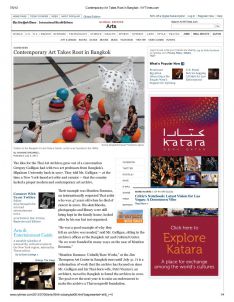
5 July 2013
The THAI ART ARCHIVES in the NEW YORK TIMES Global Edition of 6-7 July 2013
The Thai Art Archives is delighted to be featured in the IHT/New York Times Global Edition of 6-7 July in an Arts feature on the Thailand-Expat contemporary art world of Bangkok. We're thrilled to have our mission so marvelously decribed by writer Ginanne Brownell, who visited the TAA special projects hub at the Bangkok Art and Culture Centre in May before we headed to New York for our third trip of development and publicity in 9 months.
We warmly thank our key supporters for standing with us since our founding in 2010. Indeed, while the concept for the THAI ART ARCHIVES originally developed out of a discussion between the director and two faculty members of Silpakorn University in 2007, the TAA has been an entirely independent---and thus self-funded---endeavor from its inception in 2010. Currently supported as a Thai non-profit heritage division of the Thai design-build firm of VIRAVI CO., LTD.---while we prepare to launch an international endowment campaign to register TAA as an official Thai non-profit foundation--- the Thai Art Archives warmly thanks 2013 Global Friends Members 100 TONSON GALLERY (since 2011), THAVIBU GALLERY, and 333 GALLERY for their critically important support and collaboration, and former members SUNDARAM TAGORE GALLERY, SERINDIA GALLERY, and 338 OIDA GALLERY (all 2012).
We extend warm thanks to Interface company for a one-time donation of product during our renovations of 2012; and we thank Fulbright Thailand and its partner association in the United States for a start up fellowship made to director Gregory Galligan in early 2010. Co-founders Gregory Galligan and Patri Vienravi are also grateful to the James H. W. Thompson Foundation for a critically important research grant of 2011, which enabled the TAA to pursue the recovery of unknown archives and drawings of Montien Boonma, and to collaborate with the Jim Thompson Art Center on the current exhibition [Montien Boonma]: Unbuilt/Rare Works, in celebration of Montien's would-be 60th birthday (Jim Thompson Art Center through 31 July). Finally, the TAA warmly acknowledges the generous collaboration of one of Thailand's permier arts platforms, the READING ROOM, on the occasion of two public programs recently featuring expat and Thai exhibitions and scholarship.
The TAA is thrilled to be included in the New York Times's excellent sampling of the countless contributions made by foreign and Thai colleagues to Thailand's vibrant and diverse contemporary arts scene. We're fortunate to be a part of this great country, its exciting capital city, and this inspiring arts community! Thank you Thailand, and thank you to the NEW YORK TIMES for bringing our mission to readers everywhere!
Click the following link to be taken directly to the New York Times article:
http://www.nytimes.com/2013/07/06/arts/06iht-scbangkok06.html?pagewanted=all&_r=0
An alternately formatted version may be found at the author's website:
http://www.ginannebrownell.com/2013/07/ihtnew-york-times-contemporary-art-takes-root-in-bangkok/
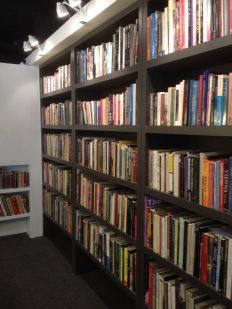
TAA Special Projects Research Library
The TAA Special Projects Research Library currently comprises a wide range of American and European art historical publications for the benefit of students, visiting researchers, and the general public. The library currently features museum exhibition catalogs, gallery catalogs, and scholarly books dating primarily from the 1980s,1990s, and early 2000s, many documenting art historical and contemporary topics ranging from Old Master studies to some of the most groundbreaking exhibitions of Relational Aesthetics (1990s forward), Installation Art, Whitney Biennials, and related themes informing the development of a "global" contemporary art scene over the last quarter century. Plans for further development include the expansion of library holdings in the area of Asian modern and contemporary art studies. The library is frequently enhanced by donations made by authors, artists, publishers, and the general public, both in Thailand and abroad.
THAI ART ARCHIVES
Founded in 2010 in Bangkok, TAA is an independent, not-for-profit "knowledge platform" for the recovery, study, preservation, and exhibition of Thai modern and contemporary art and ephemera
Welcome to Thailand’s only dedicated platform that actively identifies, collects, catalogues, preserves, and exhibits the historically valuable ephemera—professional documents, personal papers, photographs, notebooks, sketchbooks and related items—of Thailand’s progressive modern and contemporary artists, independent/artist-run ("alternative") art spaces, and related “avant-garde” phenomena.
Unlike primary works of art, such as painting and sculpture, comparatively ephemeral materials are frequently lost or destroyed on the passing of a prominent Thai artist, or even during her/his lifetime. Given this potential loss to Thai culture, as well as a global art-historical community, the Thai Art Archives’ mission is to proactively identify, recover, study, document, and preserve such materials for the benefit of current and future generations.
- Exhibitions (Modern & Contemporary)
- Educational & Public Events/Programs
- Curatorial Practice & Museum Studies
- Student Internships
- Digital Knowledge Hub & Research Platform
- Digital "Residencies" for Visiting Scholars
- Oral History Initiatives
- Publications, Special Projects, Cataloguing
The THAI ART ARCHIVES aims in all its programs to explore and enrich cultural exchange, to promote global access to transcultural histories, and to encourage regional and international dialogue over the research into, the writing, and the documentation of diverse perspectives on the most progressive currents in Thai modern and contemporary art since the early 20th century to the present.
ARCHIVE: RIRKIT TIRAVANIJA'S "WHO'S AFRAID OF RED, YELLOW, AND GREEN" at the HIRSHHORN MUSEUM, Washington, DC

On the occasion of RIRKRIT TIRAVANIJA'S FIRST SOLO EXHIBITION IN BANGKOK, "who's afraid of red, yellow, and green," in 2010, THAI ART ARCHIVES recognized this as an unprecedented opportunity to document the event for posterity with an artist's roundatble discussion. Partnering with 100 Tonson Gallery, Bangkok, THAI ART ARCHIVES hosted the discussion with TIRAVANIJA speaking with panelists Phaptawan Phataranawich (THE NATION, Bangkok); PIER LUIGI TAZZI (Independent Curator); APINAN POSHYNANADA (Independent Curator); and GREGORY GALLIGAN (THAI ART ARCHIVES). To a standing-room only crowd, Tiravanija spoke at length about his life, work, and ongoing practice, the complete transcript subsequently printed with the exhibition catalogue documenting the show's daily transfomration over the course of August 2010.
SEE 'WHO'S AFRAID" NOW AT THE HIRSHHORN MUSEUM IN WASHINGTON, DC, which now owns the rights to restage the work and has installed it in museum galleries through summer 2019!
For a complete video of the original roundtable in Bangkok, contact 100 TONSON FOUNDATION for access via VIMEO.
[Photo courtesy 100 Tonson Foundation, Bangkok; All rights reserved.]
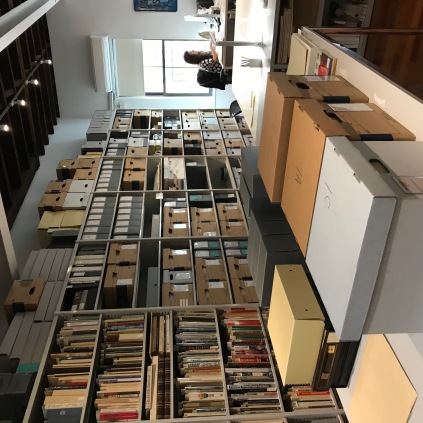
JUNE 2018
14-30 MAY 2018: THAI ART ARCHIVES RETURNED TO NEW YORK
THAI ART ARCHIVES is delighted to announce that it's research and development trip to New York from 14-30 May was a great success, resulting on new research towards the completion of the Robert Rauschenberg project and associated, institutional development.
This year we have been focusing on research for a host of specil projects, chief among them ROBERT RAUSCHENBERG AND THE RISE OF THE THAI CONTEMPORARY, which is generously funded by the TERRA FOUNDATION FOR AMERICAN ART, as well as CITIES ON THE MOVE 6, and CHATCHAI PUIPIA: EARLY YEARS.
Having recently celebrated our eighth anniversary, developmental trips such as these continue to be of critical importance for exploring new collaborations, new and sustainable sources of support, and new research and exhibition projects to be launched in the near future. So we send out a big THANK YOU to all our supporters, everywhere, for cheering us on at a critically important developmental threshold. We couldn't accomplish any of this without you!
See you on FACEBOOK AND INSTAGRAM!
[Photo Above: View of the archival materials pulled for TAA director Gregory Galligan by archivists of the Robert Rauschenberg Foundation in May 2018, for TAA's special project "Robert Rauschenberg and the Rise of the Thai Contemporary." Photo Below: TAA director Gregory Galligan with (from right to left) Assistant Archivist Shirin Khaki; Chief Archivist Francine Snyder; and archival intern Alexandra DeFiglia, of the Robert Rauschenberg Foundation, New York, May 2018; Photo by Thai Art Archives; All rights reserved.]
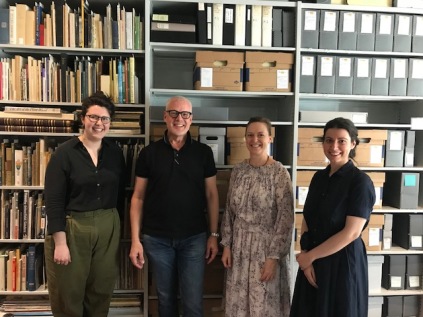
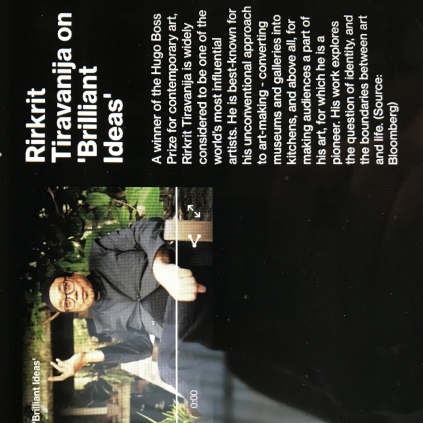
MAY 2018
THAI ART ARCHIVES is delighted and honored that director Gregory Galligan was invited to participate as a periodic commentator in this excellent documentary by Bloomberg Television on the celebrated Thai artist RIRKRIT TIRAVANIJA. TAA had the pleasure of hosting an artist’s round table event with Tiravanija on the occasion of his 2010 solo exhibition, “who’s afraid of red, yellow, and green,” at 100 Tonson Gallery, in Bangkok, just following our founding in the Thai capital that same year. To view, go to www.bloomberg.com/shows/brilliant-ideas.
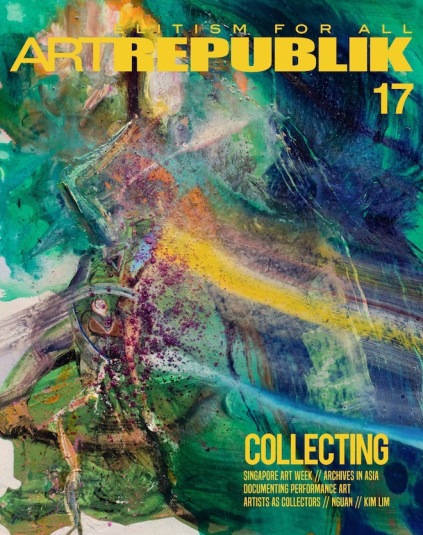
Interview with TAA's GREGORY GALLIGAN in ART REPUBLIK Magazine, JAN 2018
DON'T MISS the extended interview with TAA's director GREGORY GALLIGAN in the January 2018 issue of ART REPUBLIK [http://www.luxuo.com/culture/art/interview-with-thai-art-archives-co-founder-gregory-galligan.html]. Galligan speaks candidly and at length on the development, to date, of Thailand's first archives of modern and contenmporary art and the challenges lying ahead of us. TAA stands at a developmental threshold, as we seek to raise an endowment to lend continuity and stability to our special projects and non-profit platform. THANK YOU, ART REPUBLIK, for your support!
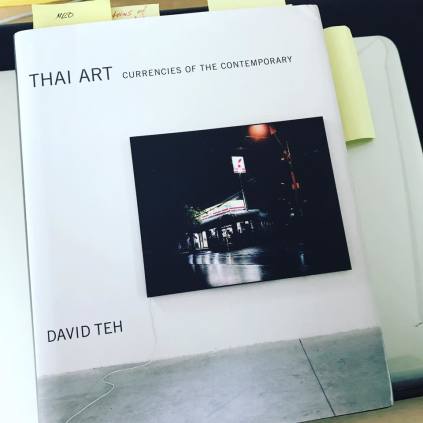
15 October 2017
Book Review: David Teh, "THAI ART: Currencies of the Contemporary" [The MIT Press, 2017]; ART IN AMERICA, JANUARY 2018
It's been a quarter century since a book on modern and contemporary Thai art was released to the public [Apinan Poshyananda, Modern Art in Thailand, 1992]; hence David Teh's THAI ART: Currencies of the Contemporary warrants close scrutiny. The effort is paid off handsomely, as Teh—an independent curator and Associate Professor of English Literature at the National University of Singapore—navigates the topic with erudition and insight.
How does this book add to our understanding of the process by which Thai contemporary art has recently come to be celebrated on a global, transnational platform? And how does this book propose a new appreciation for the ways Thai artists accommodate multiple audiences, at once local, regional, and global, while remaining true to their own "orbital" practices? Where does this book offer new avenues of inquiry, and where does it fall short of doing justice to the full complexities underlgirding Thai modern and contemporary art at this tumultuous moment in Thai history?
TAA director Gregory Galligan reviews THAI ART for ART IN AMERICA magazine in January. Don't miss it!
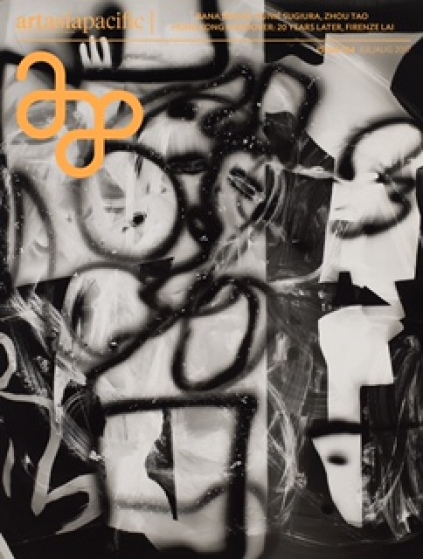
ART ASIA PACIFIC, July/August 2017
In the July/August 2017 issue of ArtAsiaPacific, TAA director Gregory Galligan writes in his Bangkok report on the "decentralization" of the Thai contemporary art world and the scene of hyper-gentrification, private museums, and perpetual "festivals with fairy lights" in the Thai capital. With not one but two biennials slated for Bangkok in 2018, as well as the promised debut in the near future of new museums by private collectors and a new state-funded Thailand Cultural Centre, is this a time for "guarded optimism?"
CAMERA OBSCURA: A New Archival Film Series by Thai Art Archives, 2016-Present
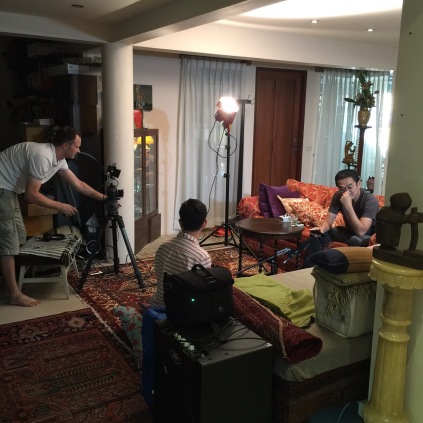
THAI ART ARCHIVES announces new filmic series CAMERA OBSCURA, documenting historic and contemporary Thai/Southeast Asian art
As part of TAA’s ongoing commitment to documenting the most progressive and historic currents in the Thai and Southeast Asian modern/contemporary art scene, our new “oral history” series, Camera Obscura, has been conceived as an adaptive and creative venture, providing opportunities for us to capture artists in conversation about their life and work, or to collaborate with artists to produce new projects that function simultaneously as creative and archival “documents.”
This series is launched with an informal interview of Chatchai Puipia by TAA associate/artist Vichaya Mukdamanee, who spoke with Puipia only weeks ago [23 October] in the artist’s Bangkok home and studio. Here, Puipia speaks candidly about his life and work of the 1990s to the present, thus shedding new light on his working processes, the sources of his inspiration, and the artistic, social, and political elements of some of his most renowned art works.
Culminating our year-long celebration of the life and work of Chatchai Puipia, Thai Art Archives™ and 100 Tonson Gallery are pleased to present for Bangkok Galleries Night 2015 [Sat., 28 November 2015, 7-8pm] a premiere screening of Camera Obscura [1]: Chatchai Puipia in Conversation.
After Bangkok Galleries Night, the film will remain in the gallery as the culminating installation of the exhibition Chatchai Puipia: Sites of Solitude/Celluloid Traces, through 3 January 2016.
Director: Patri Vienravi, Co-Founder & Creative Director, Thai Art Archives™
Curator: Gregory Galligan, Co-Founder & Director, Thai Art Archives™
Interviewer: Vichaya Mukdamanee, University of Oxford
Filmmaker: Sander Kamp
45 Minutes; in Thai with English subtitles [by Chonticha Kaiwong]
© Thai Art Archives™, Bangkok; All rights reserved.
TAA and 100 Tonson Gallery, Bangkok, Complete Comprehensive Archival & Exhibition Project with Artist CHATCHAI PUIPIA for 2014-2015
CHATCHAI PUIPIA: ARCHIVES & EXHIBITION PROJECT represents a new kind of collaborative undertaking in Thailand.
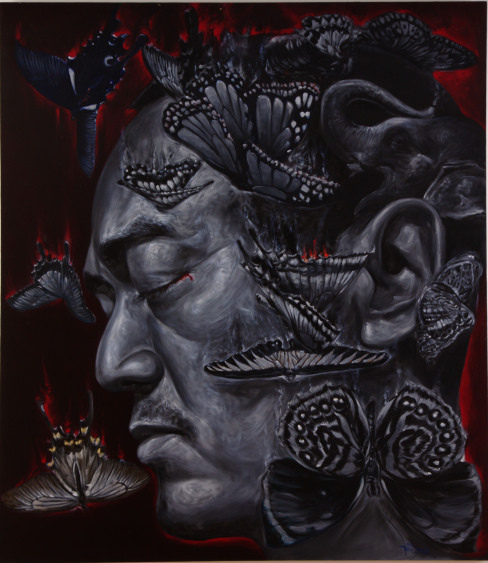
Chatchai Puipia, 03:15 a.m., 16-05-2014, 2014
Oil on canvas, 200 x 190 cm; Photo courtesy 100 Tonson Gallery, All rights reserved.
100 TONSON GALLERY and THAI ART ARCHIVES™, in collaboration with renowned artist CHATCHAI PUIPIA, are delighted to announce the launch in Bangkok of an unprecedented, collaborative archival and exhibition project from
October 2014 – December 2015.
The CHATCHAI PUIPIA: ARCHIVAL & EXHIBITION PROJECT [henceforth Chatchai Puipia Project], represents a new kind of collaborative undertaking in Thailand. Generously funded by 100 TONSON GALLERY by a major grant made to THAI ART ARCHIVES (TAA) this September, the project will establish for the first time in Thai history a comprehensive online database (“catalogue raisonné”) of Chatchai Puipia’s work for global access by the public, along with a comprehensive biographical profile of the artist, extensive bibliography, and a scholarly, art historical investigation into Chatchai Puipia’s life and work.
Launched during 100 TONSON GALLERY’s 10th ANNIVERSARY celebrations, the Chatchai Puipia Project signals a new decade of development and represents a continued commitment by gallery director Ek-Anong (Aey) Phanachet to bringing Thai contemporary art to international attention via cutting-edge art installations, the participation in global art fairs, and now the sponsorship of an international-quality archives for developing a world-class, Thai art-world infrastructure. In keeping with this evolving mission, 100 TONSON GALLERY has been a distinguished and generous member of the TAA Global Friends Circle since TAA’s founding in January 2010, and Ms. Phanachet currently serves as an advisory board member (since 2012).
The Chatchai Puipia Project also arrives on the eve of the independent, not-for-profit THAI ART ARCHIVES’S 5th ANNIVERSARY celebrations since its private founding, in Bangkok—at the Bangkok Art and Culture Centre—as a progressive, heritage-preservation institute by Patri Vienravi and Gregory Galligan in 2010. TAA is an official partner with INDEPENDENT CURATORS INTERNATIONAL (ICI), New York, which has graciously participated in this project as an administrative, ‘fiscal sponsor’ of this grant. Originally conceived in memory of the renowned Thai modernist Montien Boonma (1953–2000), TAA advances a global, not-for-profit mission as an international research hub for the recovery, research, cataloging, preservation, and exhibition of Thai modern and contemporary art and related ephemera.
The CHATCHAI PUIPIA PROJECT will feature (but is not limited to):
- A comprehensive, keyword-searchable image database of Chatchai Puipia’s work.
- A comprehensive biography created in collaboration with the artist and already published sources.
- The digitization of numerous catalogs and artist’s ephemera [potentially including never-before exhibited drawings, sketches, and other studies].
- The recording and publishing of oral histories and transcripts of the artist on being newly interviewed about his life and work.
- A two-part solo exhibition at 100 Tonson Gallery, curated by TAA co-founder and director Dr. Gregory Galligan with the collaboration of the artist, to be on view from April–December 2015 (catalog with original research included).
- The publishing of a printed catalog bringing together oral histories, interviews, and new scholarly research in one continuous and expandable collection.
- The creation of an academic symposium in mid-2015, welcoming new perspectives on the artist’s life and work by leading academics and curators.
The Chatchai Puipia Project will also mark the launch of “100 Artists Archive,” an online database that will serve as a pilot platform for potential expansion by the Gallery and TAA in the near future. The project will be directed by TAA director and independent curator Gregory Galligan, with creative direction contributed by co-founder Patri Vienravi [director of TAA’s parent design-build company, VIRAVI CO., LTD.], both in consultative collaboration with Ms. Phanachet and the 100 Tonson Gallery team. The project will also provide ample opportunity for graduate and post-graduate interns to practice their skills in archiving, art-historical research, digitization, and other aspects of curatorial, museum, gallery, and academic professions.
Further details of the Chatchai Puipia Project will be released to the media and posted to the websites of 100 TONSON GALLERY and THAI ART ARCHIVES from October 2014 through December 2015.
ABOUT 100 TONSON GALLERY
Since its founding in Bangkok in 2003, 100 Tonson Gallery has consistently built a reputation for representing top-quality contemporary artists and expertly-organized exhibitions. Named after its street address, 100 Tonson Gallery is centrally located in the bustling and vibrant capital of Thailand. The space itself—conceived by renowned French designer, Christian Liaigre—has been a dynamic platform for nearly 60 international-standard exhibitions for over a decade.
100 Tonson Gallery has successfully introduced many leading international artists to Thailand, among them Yayoi Kusama, Orlan, Damien Hirst, and Louise Bourgeois. Our mission is to push the potential of contemporary art and examine a wide array of directions in contemporary visual culture. In that interest, 100 Tonson Gallery frequently engages in dynamic collaborations with top contemporary regional and international curators to realize challenging and stimulating projects and select thematic exhibitions.
100 Tonson Gallery is also in the forefront of representing and promoting leading Thai contemporary artists—among them Rirkrit Tiravanija (in cooperation with Gallery VER), Araya Rasdjarmrearnsook, Chatchai Puipia, Porntaweesak Rimsakul, Yuree Kensaku, Wit Pimkanchanapong, and Pichaya Khunnawat—and select global contemporaries—such as Yayoi Kusama and Belgian artist Peggy Wauters—to international museums, independent art establishments, and distinguished private and corporate collectors.
In keeping with its founding mission, 100 Tonson Gallery contributes to the Thai community not only by bringing quality artwork to the public, but also by donating part of all proceeds to various charitable organizations. The Gallery also provides scholarships to Thai students and emerging professionals for higher studies in curatorial programs. We believe that well-informed and expertly motivated personnel are crucial for the development of the regional and global art scene.
THAI ART ARCHIVES is delighted and honored to have 100 TONSON GALLERY as a leading member of our GLOBAL FRIENDS CIRCLE since our founding in January 2010. Please join us in celebrating the remarkable achievements of 100 TONSON GALLERY on the occasion of its 10th ANNIVERSARY, and in wishing 100 TONSON GALLERY many successful years to come. Thank you for your support, 100 TONSON GALLERY!
[Photos below: Scenes from the opening of CHATCHAI PUIPIA: SITES OF SOLITUDE, 9 April, at 100 Tonson Gallery; photos courtesy 100 Tonson Gallery; All rights reserved.]
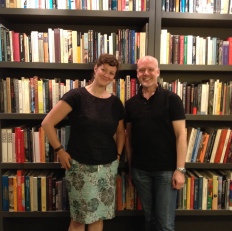
ABIGAIL SEBALY joins TAA's ROBERT RAUSCHENBERG PROJECT as Advisory Curator
THAI ART ARCHIVES IS DELIGHTED TO ANNOUNCE that independent scholar ABIGAIL SEBALY has joined the Robert Rauschenberg in Thailand project as an advisory curator, along with Hiroko Ikegami (as earlier announced).
Sebaly will advise and collaborate on the documentation of Rauschenberg's original trip to Thailand in 1964, when he was the official costume and set designer for the Merce Cunningham Dance Company's World Tour. We are delighted and honored to have her with us!
Abigail Sebaly is an independent researcher, historian, and writer currently focusing on the Merce Cunningham Dance Company’s historic 1964 World Tour. Her work is supported by the Getty Research Institute, a John Cage Research Grant from Northwestern University Library, and a writer’s residency from the Mabel Dodge Luhan House (Taos, New Mexico). From 2011–2014, Sebaly was the Merce Cunningham research fellow at the Walker Art Center, where she researched and cataloged the Center’s comprehensive Merce Cunningham Dance Company Collection. In addition to processing over 3,500 set and costume pieces, she conducted extensive archival research on the collection, including personally undertaking over 50 oral history interviews in Europe, Japan, and the United States.
From 2003–2008, Sebaly worked in various capacities for the Cunningham Dance Foundation in New York City, including as director of special projects and as an administrative assistant to Merce Cunningham.
Sebaly earned an M.A. in the Humanities from the University of Chicago (2010), with a thesis focused on the study of performance curation. She also holds a Graduate Certificate in Performance from the Institute for Curatorial Practice at Wesleyan University (2013); and a B.F.A. in Dance and a B.A. in English from the University of Michigan (2003). From 2008–2009, Sebaly was a Fulbright Postgraduate Scholar in Melbourne, Australia, where she participated in a professional mentorship at the Melbourne International Arts Festival with artistic director Kristy Edmunds; founded the draft work series First Run with Lucy Guerin, Inc., and performed her own choreography at the Northcote Town Hall and at the Central Academy of Fine Arts in Beijing, China.
[Photo of Abigail Sebaly with TAA director Gregory Galligan at Thai Art Archives in May 2015; photo by THAI ART ARCHIVES; All rights reserved.]
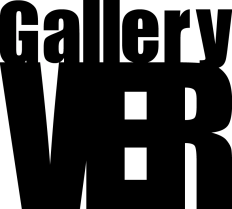
THAI ART ARCHIVES AND RIRKRIT TIRAVANIJA'S GALLERY VER ANNOUNCE ARCHIVAL COLLABORATION
Thai Art Archives and Gallery VER, Bangkok, are delighted to announce their collaboration on the publication and global distribution of the Gallery's 10th Anniversary publication, RETRO VER-SPECTIVE. The bilingual publication (already largely completed by the Gallery) is planned as a limited edition artist's book (print-on-demand), with a global-distribution edition for the public documenting Gallery VER's history as one of Thailand's most dynamic and progressive artist collectives of the last decade. Stay tuned for further developments in the week's ahead!

2014-2015
TERRA FOUNDATION FOR AMERICAN ART AWARDS TAA RESEARCH AND DEVELOPMENT GRANT FOR "ROBERT RAUSCHENBERG IN THAILAND" EXHIBITION
THAI ART ARCHIVES is delighted to announce that the Terra Foundation for American Art has awarded the Archives a research and development grant for curatorial travel ($5,000 USD/160,000 THB) for TAA's development of the exhibition Robert Rauschenberg in Thailand, 1964/1983 [RRIT], slated for debut in Spring 2017 (Bangkok/New York).
The RRIT project/exhibition is a comprehensive archival and curatorial effort to reconstruct Robert Rauschenberg's working sojourn in Thailand in March 1983, when he traveled the country and met with artists, professors, and the public to discuss the role of artists as global ambassadors for peace and intercultural understanding. The project investigates Rauschenberg's activities and work executed in situ and in New York directly related to his Thai venture (a complete series of solvent transfer drawings, photography, and video recordings count among the core components), and engages in a comparative study that takes into consideration Rauschenberg's 1964 visit to Bangkok with the Merce Cunningham Dance Company, for which he served as principal costume and set designer.
This project seeks to shed new light on the intercutural exchanges between American and Thai art at important junctures in both nation's modern art histories, each at once unique and mutually informing, thus building on recent investigations into American artists' interest in Asia as epitomized in the milestone 2009 exhibition The Third Mind: American Artists Contemplate Asia: 1860-1989 (Solomon R. Guggenheim Museum, New York; curator Alexandra Munroe). It also seeks to demonstrate how American art served as both an inspiration and an important counterfoil to developments in the Thai context throughout the 1980s, especially among artists such as Montien Boonma, Panya Vijinthanasarn, and others seeking new modes of expression that might integrate Thai themes with international practices. For further information, see our summary of the project under the Special Projects tab, above.
TAA gratefully acknowledges the Terra Foundation's generous support of our mission as TAA celebrates its 5th Anniversary in 2015. We look forward to keeping the Terra Foundation posted on our progress for this exhibition as it develops over the next two years.
For further information, contact director Gregory Galligan, at thaiartarchives@gmail.com.
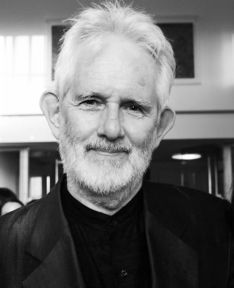
January 2014
JOHN CLARK JOINS TAA ADVISORY BOARD
The Thai Art Archives is delighted and honored that JOHN CLARK, Prof. Emeritus of the University of Sydney, has graciously joined the TAA Advisory Board. Dr. Clark will contribute to advising the director and co-founders on development, public outreach, and special projects.
John Clark is a specialist on modern Japanese and Chinese art as well as several other Asian countries. His other languages are Japanese, Chinese, French, German, and Thai which he speaks and reads to intermediate level. He retired from Professor of Asian Art History at the University of Sydney in October 2013, is a Fellow of the Australian Academy of Humanities, and member of the International Committee for Art History. He first visited Thailand in October 1976, but has been working on modern and contemporary Thai art since 1992, and recently published the first comparative study of two modern Asian art cultures, Asian Modernities: Chinese and Thai art of the 1980s and 1990s, Sydney, Power Publications, 2010 with a forewords by Yin Shuangxi and Apinan Poshyananda.
He is a member of the organizing committee of the 12th International Conference of Thai Studies to be held at the University of Sydney in April 2014 with concerns for the art history area. He has curated with Clare Veal two exhibitions of the work of Araya Rasdjarmrearnsook from March to May 2014 at the University of Sydney and Gallery 4A linked to this conference, and another at the Drill Hall, ANU, in Canberra in July.
[Montien Boonma]: Unbuilt/Rare Works at the Jim Thompson Art Center Closed 12 August 2013
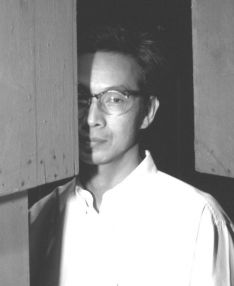
The THAI ART ARCHIVES is delighted to have collaborated with the Jim Thompson Art Center and the Estate of Montien Boonma to bring [Montien Boonma]: Unbuilt/Rare Works to the Jim Thompson Art Center, Bangkok, from 11 April through 12 August 2013.
[Montien Boonma] celebrates the profound influence of Montien Boonma on current and future generations. The show brings to light some 60 original drawings rarely, or never before seen by the public, and newly uncovered archival ephemera, such as documents, notebooks, sketchbooks, printed matter, photographs, video footage, and related materials that have recently come to light through the collaboration of the Jim Thompson Art Center, the Thai Art Archives, and the Estate of Montien Boonma. The exhibition will be complemented by a program of guided tours and educational programs; in addition, this exhibition will feature an educational conference and a scholarly catalogue.
[Montien Boonma] is, in part, one of several culminating events of the Thai Art Archives’s “Montien Boonma Project,” first launched in 2010 with the aid of 150,000 THB provided by the James H. W. Thompson Foundation for facilitating new research and locate formerly lost or unknown archival ephemera—a goal recently aided by the generous cooperation of the Estate of Montien Boonma.
By gracious agreement with Hans Ulrich Obrist, [Montien Boonma] extends Obrist’s publication and exhibition project UNBUILT ROADS (1997), in which Obrist argues for the importance of artists’ unfinished, unrealized, or unexecuted work as important documents for shedding light on an artist’s creative processes. Notably, Obrist invited Montien to participate in a realization of UNBUILT ROADS in the late 1990s (Montien was unable to participate). The exhibition includes related correspondence between Montien, Obrist, and mutual friend Edouard Mornaud, who has graciously assisted the co-curators in its recollection. [Montien Boonma] features a conference and discussion—possibly including Hans Ulrich Obrist via SKYPE—on 9 May 2013, which will bring together early supporters of the artist and new scholarship by young researchers. The conference may be simulcast to participating venues worldwide.
This exhibition also references Edmund Husserl’s phenomenological concept of epoché, or “bracketing,” a philosophical approach calling for the examination of a subject free of all assumed truths, or received assumptions. [Montien Boonma] thus seeks to encourage a newly self-conscious extension, enrichment, and even deconstruction of the perception and the figure of Montien Boonma as his legacy is creatively engaged by current and future generations. It also attempts to explore dimensions of the artist’s work apart from already well-documented Buddhist influences, by situating Montien’s work in social, political, and economic contexts of Thailand and a newly globalized world since the late 1980s.
This exhibition is further inspired by scholar Virginia Henderson’s generous cooperation and her seminal 2005 essay, “Montien Boonma’s Unrealized Projects,” originally published in the catalogue of the distinguished posthumous retrospective Death Before Dying: The Return of Montien Boonma (2005), organized by Dr. Apinan Poshyananda (Deputy Permanent Secretary, Thailand Ministry of Culture) and a distinguished panel of curators—including current Assistant Curator Somsuda Piamsumrit—at the National Gallery, Bangkok.
In addition to celebrating the life and work of Montien Boonma on the occasion of his would-be 60th birthday (25 February 2013), this exhibition is unprecedented for featuring a surviving series of prints by Chancham (Mukdaprakorn) Boonma, Montien’s wife, who passed away prematurely in April 1994 due to breast cancer. An accomplished artist and printmaker in her own right, and a classmate of Montien at Silpakorn University—where they met before marrying in 1986—Chancham Boonma is recollected here for the first time in nearly thirty years by the generous cooperation of the Estate of Montien Boonma.
[Photo of Montien Boonma: Manit Sriwanichpoom, Montien Boonma, 1995 (detail); by kind courtesy of the artist; all rights reserved]
The Jim Thompson Art Center
THRESHOLDS: Contemporary Thai Art
THAI ART ARCHIVES DEBUTS CONTEMPORARY THAI ART @ Sundaram Tagore Gallery, New York / Hong Kong, March / November 2013
THAI ART ARCHIVES was delighted and honored to be chosen by the SUNDARAM TAGORE GALLERY, New York, to debut a show of contemporary Thai art in Chelsea in March 2013.
Curated by TAA director and co-founder, Dr. Gregory Galligan, and two years in the making, THRESHOLDS reintroduced contemporary Thai artists KAMIN LERTCHAIPRASERT, SAKARIN KRUE-ON, NIPAN ORANNIWESNA, PHAPTAWAN SUWWANAKUDT, ANGRIT AJCHARIYOSOPHON, and NIM KRUASAENG to New York and Hong Kong audiences.
TAA was honored by the opportunity to bring our mission to New York audiences, and to have in attendance ART IN AMERICA magazine, ARTnews magazine, and close colleagues of the GUGGENHEIM MUSEUM, ASIAN ART COUNCIL, INDEPENDENT CURATORS INTERNATIONAL (ICI), MUSEUM OF MODERN ART (MoMA), METROPOLITAN MUSEUM OF ART, and many others.
Stay tuned for new exhibitions in development for New York and Bangkok! For the full-color catalog, visit the Sundaram Tagore Gallery in person or via its website, http://www.sundaramtagore.com/exhibitions/2013-02-28_thresholds/ ; also available at our special projects hub in Bangkok.
[Photos: Udom Surangsophon for Thai Art Archives; All rights reserved.]

